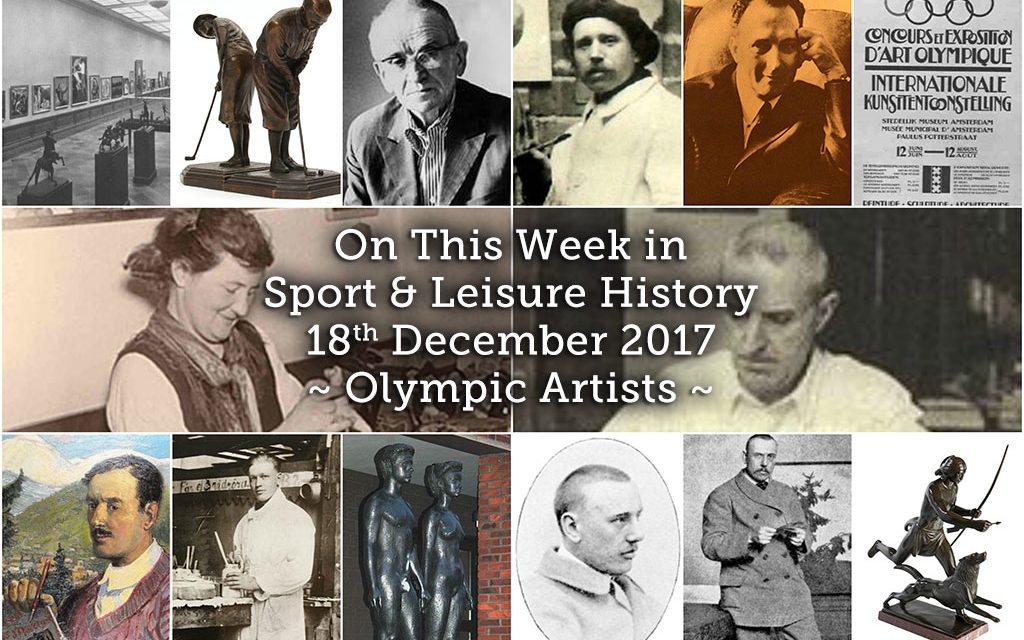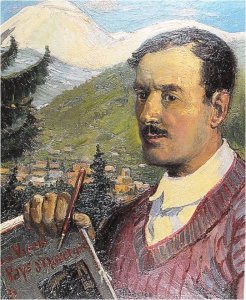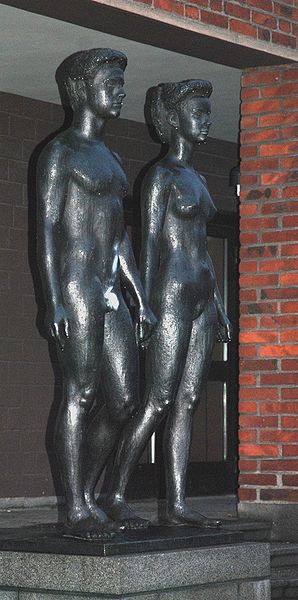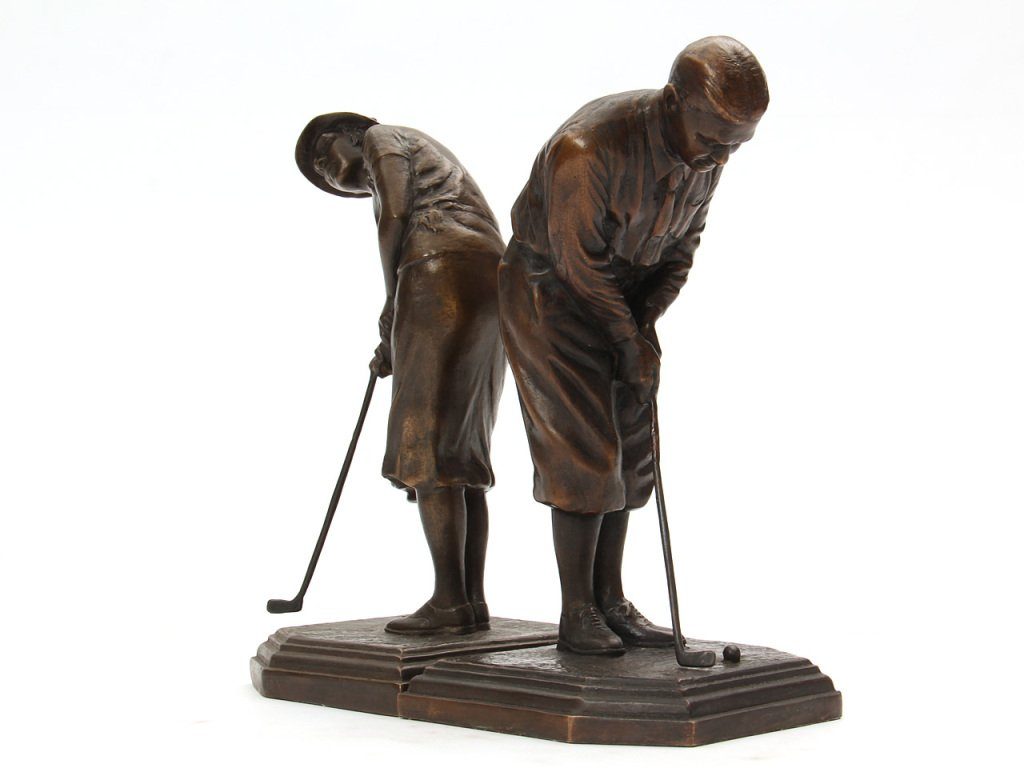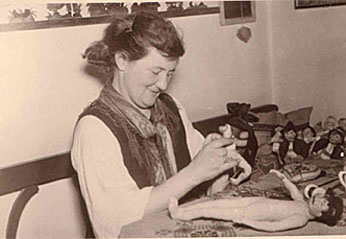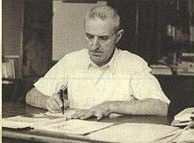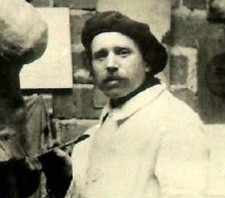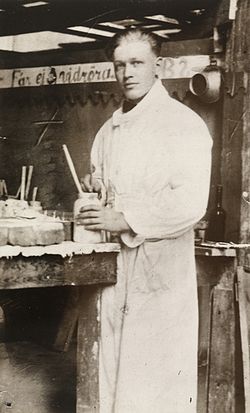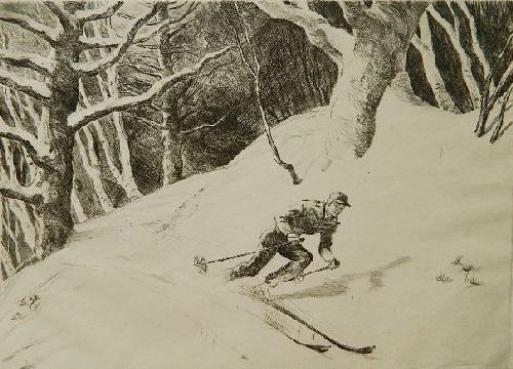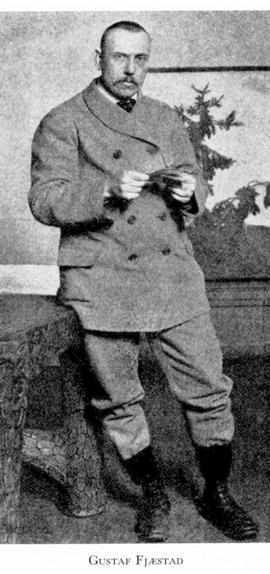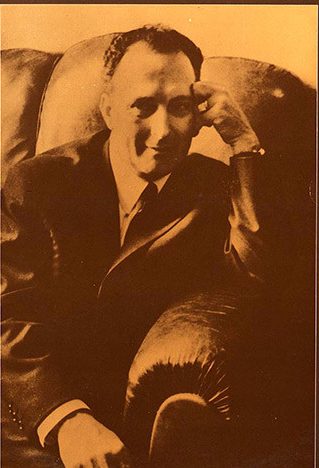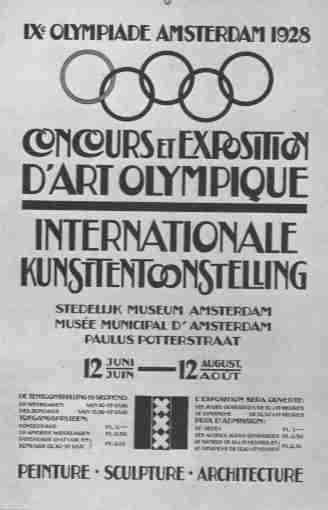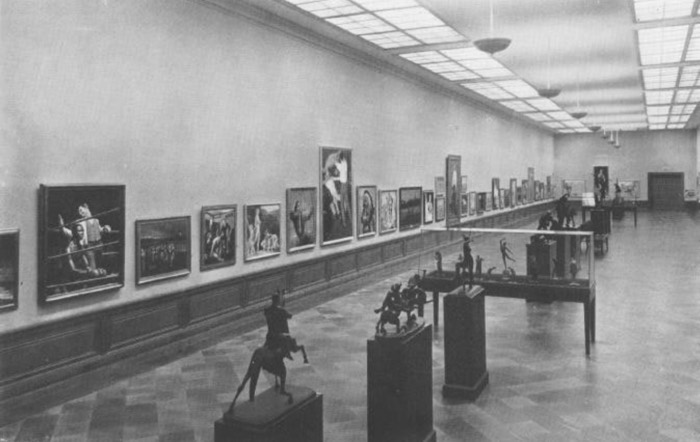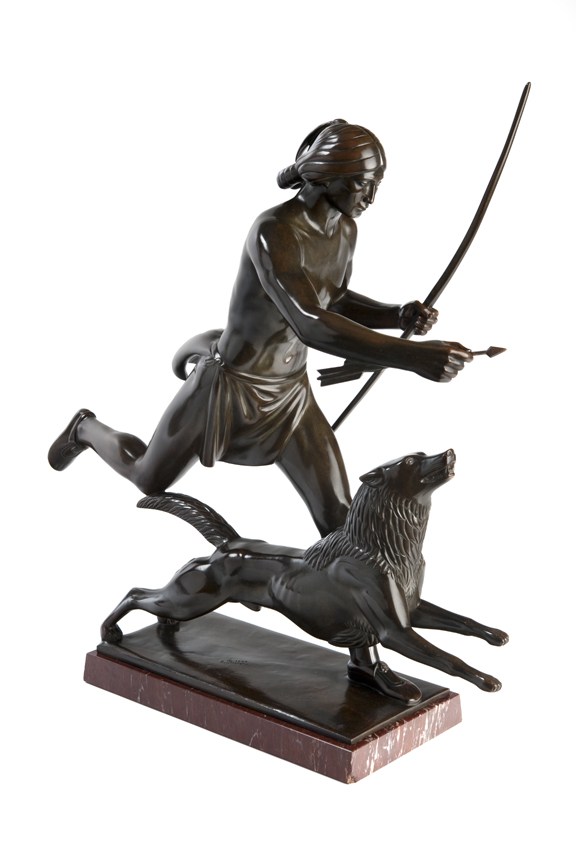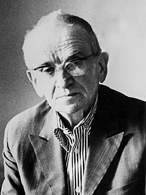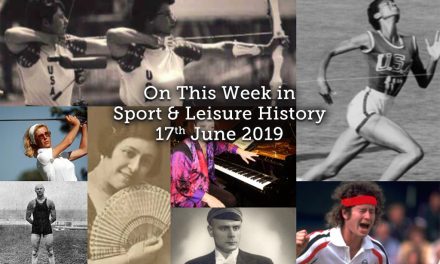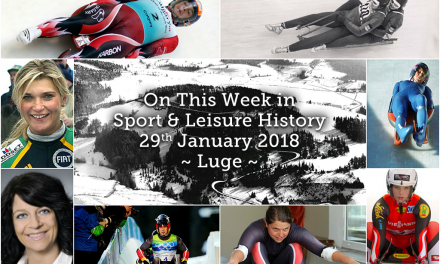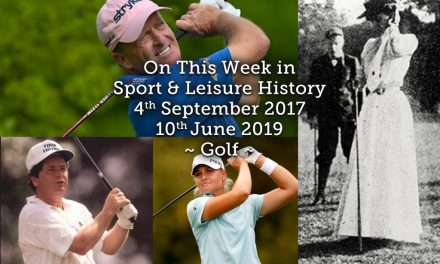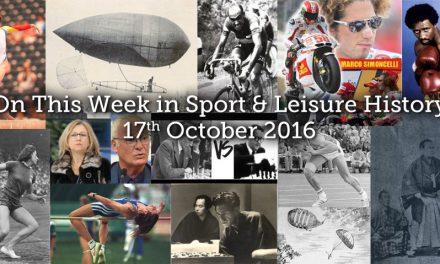This week “On the week in Sport and Leisure History” focusses on the Olympic Art competitions which formed part of the modern Olympics from 1912 to 1948, and remembers artists born during this week in years gone by. The competitions were part of the original intention of the Olympic Movement’s founder, Pierre de Frédy, Baron de Coubertin. The celebration of the first Games saw the fulfilment of Coubertin’s ideals, that was to see men educated in both mind and body and compete in sport rather than war and one of his wishes was that art and sport would be combined. So, artistic competitions were included in these early editions of the Olympic Games. Medals were awarded for works of art inspired by sport, divided into five categories: architecture, literature, music, painting, and sculpture. The art competitions were abandoned in 1954 as artists were considered to be professionals, and Olympic athletes were still required to be amateurs. The Olympic cultural programme has taken the place of these competition since 1956.
While several of the Olympic art medallists achieved some national fame, few of them can be considered well-known artists globally. Judging by the medals won, Luxembourg painter Jean Jacoby is the most successful Olympic artist, winning the gold medal for his 1924 painting Étude de Sport, and for his drawing Rugby in 1928. Swiss artist Alex Diggelmann won three medals, a gold one in 1936 (for his poster Arosa I Placard), and a silver and a bronze in the 1948 applied arts & crafts class, both with commercial posters. Danish writer Josef Petersen won a silver medal on three occasions: in 1924, 1932, and 1948. Only two people have won Olympic medals in both sport and art competitions. Walter W. Winans, an American who lived in England, won a gold medal as a marksman at the 1908 Games and a silver in 1912, by then, he had already won a gold medal for his sculpture An American trotter. The other Olympian with successes in both fields is Alfréd Hajós of Hungary. As a swimmer, he won two gold medals at the 1896 Athens Olympics. Twenty-eight years later, he was awarded a silver medal in architecture for his stadium design, co-designed with Dezső Lauber. Britain’s John Copley, winner of a silver medal in the 1948 engravings and etchings competition, was 73 years of age, making him the oldest Olympic medallist in history.
18th– French artist Maurice Busset was born on this day in 1879 in Clermont-Ferrannd. He competed in the Mixed painting category at the 1924 Games, entering three paintings – Ski Jump, Arrival of the Hydroplane and Depart of the Hydroplane. He was not placed in the top three of any of his works. He later became an art teacher in Clermont-Ferrand. During WWI he was a painter in the archives of military aviation. From 1929, he moved full time to a large studio in Clermont-Ferrand and became assistant curator at the City Museum. He also had a passion for archaeology and claimed to have discovered the true site of the Battle of Gergovie on the coast of Clermont-Ferrand, a theory still debated today. He died on 30th April 1936.
Sculptor and painter Graciano Nepomuceno from the Philippines was a leading sculptor and icon maker during the early 1900s. His famous works included the figure of San Francisco in Quiapo Church and the bust of Jose Rizal done in bronze relief. Besides this he produced realistic polychrome figures of peasant types, such as a woman holding a clay pot and a grey-haired man proudly holding a rooster. Animal subjects also fascinated Nepomuceno. One of his best-known sculptures portrayed a man grappling and subduing a crocodile. Born today in 1881, he entered wooden statue called the Sipa Player into the 1948 London Games, which was held at the Victoria and Albert Museum. While many of the paintings and statues from the art competitions are no longer on public display, Gustaf Nordahl’s winning Homage to Ling an still be seen outside the Gymnastics and Sports college in Stockholm. Second prize was won by an Indian sculptor, although Chintamoni Kar had adopted British citizenship and represented the host nation. Bronze medallist Hubert Yencesse was a member of a sculpturing family. His father, Ovide, was a noted medal-maker, while his brother Jacques and daughter Dodie were also sculptors.
Japanese painter Heizo Kanayama, born in 1883, entered Tokyo Bijutsu School in the Western painting department at the age of 21 years, and his talent was recognized immediately. He learned the technique of oil painting in Europe, beginning in 1912 in France, and studied abroad for the next four years. Kanayama travelled around Europe, and painted mainly in Paris until 1915. Back in Japan he spent his winters in Nagano from 1917, painting mainly winter landscapes. He entered a single painting into the 1932 Games, called Skating, but he failed to be placed in the top three. He died in Toshima, Tokyo on 15th July 1964.
Danish artist Harald Hans Vilhelm Hansen was born in 1890 in Copenhagen. He had seven entries in the mixed painting competition in Los Angeles in 1932 but failed to win a medal. He studied at the Royal Academy of Fine Arts and was well known for his marine and ship paintings. His mountain landscapes were mostly characterized by a modified expressionistic style in modernistic direction. He also painted javelin throwers, riders, acrobats, and pole jumpers. In the mid-1920s he also designed decorations for theatres and public buildings. In his later years Hansen became a renowned portrait painter for the royal family. In 1934, he was awarded the Eckersberg-Medal.
An artist who entered his work into the 1936 Games was Gustave Fischweiler, he was born in 1911 in Saint-Servais, Namur, Belgium. Fischweiler studied at the Academy of Fine Arts of Namur from 1925-29, and then at the Royal Academy of Fine Arts in Brussels, attending there from 1929-32. He then served with the Regiment 13th line in Namur in 1932-33. He later worked in medals, mostly by the method of strikes and spanning, with different motives such as automobiles, portraits, sports and animals. He was not able to fully support himself as an artist, however, so he also worked as a banker in Brussels for many years. He won numerous awards for medals and modelling in his native Belgium. In the 1936 Games he entered one painting called Motocycliste en course. He died in 1990 in Brussels.
- Maurice Busset
- Hommage to Ling by Gustav Nordahl
19th– American Edwin Everett Codman was born in Chelsea, London today in 1876. The youngest of a family of four silver designers, father and three sons, who all, bar the middle son, emigrated to American and worked for Gorham in Providence. Edwin himself was hired in June 1892 as a sculptor modeller, his father William, won a gold medal at the Paris 1900 Expo. Edwin and his brother Frank produced handwrought repousse sterling hollowware, Edwin exhibited two pieces at the Olympic competition in 1932 at the Museum of History, Science and Art in Los Angeles. The first a statue of the golfer Glenna Collett was entered hors concours, meaning that it was not entered but was not competing for a prize. The second was a pair of book ends that depicted Bobby Jones and Glenna Collett. Edwin committed sucide in 1955 at the age of 79.
Dutch painter Harrie Kuyten, a scholar of Simon Mengelberg in Utrecht who subsequently studied at the Royal Academy of Arts in Antwerpen, was born on this day in 1883. Later he travelled extensively to various countries including Scandinavia and Austria-Hungary. He was a graphic artist, painter, draftsman, lithographer and wood carver. His style was Impressionistic, but was influenced by French Fauvism. Kuyten mainly painted a variety of topics, including trees, animals, harbour scenes, interiors, landscapes, nudes, cityscapes, still life and portraits. In the late 1920s he becomes a representative of the so-called Bergense School, characterized by an expressionist style showing influences of cubism and a preference for darker colours. His painting Natation et Navigation was entered in the 1928 Olympics. He died on 29th January 1952 in Schoorl, Noord-Holland, Netherlands.
Elli Riehl, nee Urban, Austrian doll-maker was born in 1902 and died on 8th September 1977. She also painted dolls as well as creating cloth dolls as a hobby that later became her profession. Riehl first came to prominence at the spring fair of Wien (Vienna) in 1934. The Klagenfurt Verlag publishes an annual calendar with her dolls and artwork, and in 1973, a puppet museum was opened in her old house. She took part in the 1948 Olympic Art Competition with her Group of Peasant Dolls.
Jean Boedts, born today in 1904 in Limburg, Belgium and died on 4th February 1973. He studied in Liege, Paris and Florence and thereafter was employed at the court of King Leopold III of Belgium. In 1932 he was awarded the Prix de Rome. In 1954 Boedts went to the colony of the Belgian Congo (now Democratic Republic of the Congo) for six years, where he painted mostly murals. Back in Belgium, he created portraits and busts. At the 1936 Olympics he entered his sculpture Plongeuse into the Mixed sculpture competition, which took place in the Exhibition Area Hall VI, Kaiserdamm, Berlin.
Lucien Fontanarosa who was of Italian descent, but his parents had emigrated to Paris where his father found work as a tailor, was born in 1912. He lived mainly in Paris and Padua, his native country. Although he had already started painting at 13-years-old, he first had to complete a business degree until he was allowed to study painting in Paris by his parents. He completed his painting studies while living in Paris, but also Morocco, Italy and Spain. Lucien was very versatile, painting frescos, landscapes, still life, and working with many different materials. In 1954 he became a member of the jury for the Prix de Rome in the paintings category. His painting Cavalier was awarded Honourable Mention at the 1948 London Olympic Art Competitions.
- Glenna Collett and Bobby Jones by ED Codman
- Elli Riehl
20th – Camille Ravot, a Parisian sculptor and lithographer, born in 1873, was mostly known for his 1915 lithograph of the assassination of French socialist leader Jean Jaures by the student and French nationalist Raoul Villain. The day after the assassination, general mobilization in France was proclaimed and World War I started three days later. Ravot was known more as a sculptor than as a painter. He and his son presented some 100 pictures depicting the travels they undertook in France and abroad, including drawings, oil paintings and watercolours. They were displayed at the Jean Jaures Museum in Castres, France. At the 1924 Games he entered two pieces – Discus Thrower and Weightlifter. The Grand Palace of the Champs de Elysee, Paris was the venue for the exhibition of Olympic art works, which was “won” by the Greek sculptor Kostas Dimitriadis for his Finnish Discus Thrower.
Swiss sculptor, medallist and painter Andra Pettineroli was born Lausanne in 1902 and died in Gimel on 3rd October 1978. He was the brother of Ãdouard Pettineroli (1896-1961), also an artist. Andra served his apprenticeship as a woodcarver and attended the Ecole des Arts et Metiers, and later the Ecole des Beaux-Arts in Lausanne. In 1930 he was awarded a Swiss Federal Art Scholarship and in the following years travelled to Rome, Paris and Tunisia. He had his most important exhibitions in the second half of the 1930s in various Swiss cities. Pettineroli produced paintings and prints as well as sculptures in wood, stone, marble and bronze. His piece La course a pied was entered into the mixed sculpture, medals and reliefs competition at the 1928 Amsterdam Games, the exhibition of art was held at the Municipal Museum in the city. There were 255 sculptures, including 80 medals and reliefs, submitted according to the Official Report, although those details do not match those of the art catalogues. The gold medal was won by the Austrian Edwin Grienauer for Medailles.
Leonardo Maria Borgese, born on this day in Napoli, Italy in 1904, the son of the writers and poets Giuseppe Antonio Borgese and Maria Freschi, after an early childhood in his native Naples , in 1910 he moved to Rome, where his father had been appointed professor of German literature at the University “La Sapienza”. In 1918 he moved to Milan as his father become a professor of aesthetics at the University. He denied the fascist oath in 1930 at the University of Milan, and had to emigrate to the United States until 1949. Leonardo was also a writer of essays and short stories, but was best known as an art critic for the newspaper â Corriere della Seraâ from 1945-67. He graduated from the Academy of Brera in Milano in 1928 in Archeology and Medieval and Modern Art History. Subsequently, he continued his studies in Paris and Roma. Beginning in 1934, he participated in the Biennale di Venezia. As a painter, his main subjects were interiors, still life, and insights of the suburbs. His portraits in particular were highly esteemed. At the 1932 Olympics he entered to canvases, namely Boxe and Tennis. He died in 1986 in Milan.
- Leonardo Maria Borgese
- Camille Ravot
21st–Anders Holm, born in Copenhagen in 1878, he graduated from the Gammelholm’s Latin and Real School in 1899, but gave up his planned legal studies due to tuberculosis and eventually became a journalist. Holm became editorial secretary at Middelfart Newspaper, later he worked at the newspaper Copenhagen and then Ekstrabladet; In addition, he was a diligent contributor to Danish and foreign newspapers and journals, as well as a number of translations into French and German. Holm wrote in his own name and partly under the pseudonyms Av, Gamin, Anders Hjerting and Per Næsvis, but his significance as a newspaper journalist is poor compared to his work as editor and publisher of the weekly World Mirror (1904-07). Holm debuted as author with Digte in 1905, a collection of lively, bohemian verses which leaned towards the bourgeoisie. But it was in 1911 that he got his breakthrough with Love Poetry. Through the 1910s and 20s he published several series of Bohemian poems, love poems, and some erotic poetry, but he was also known for writing children’s nursery rhymes. His verse was free-flowing and rhythmically regular and inspired several composers who used his work in a number of songs and shows, such as Axle Agerby, Niels Clemmensen, Fini Henriques. He competed in the mixed literature competition at the 1932 Olympics, there was only one category in the literature competition, although in the brochure three groups were mentioned. The jury included eminent writers such as William Lyon Phelps, Thornton Savage and Hugh Walpole. The catalogue only indicated that 18 artists participated with 18 exhibits from eight countries, and does not mention the title of the writings submitted, because the submissions arrived so late in Los Angeles that they could no longer be included in the catalogue. An Honourable Mention went to Avery Brundage, and it can be assumed that the jury wished to reward the President of the US Amateur Athletic Union (AAU), and future IOC President. The gold medal was awarded to German adventurer and author Paul Bauer for The Struggle with the Himalaya.
Dutchman Han Krug, born in 1890, attended the Academy of Art in The Hague. He worked as a lithographer in various print media, and was an illustrator and painter. In the 1920s he contributed paintings to Ons Eigen Tijdschrift, the magazine of the Van Houten chocolate factories. He was also a co-founding member of the Association of Watercolour Artists in The Hague in 1955. Krug painted landscapes, beach and seascapes, and nature flowers in the impressionistic style. At the 1936 Games he entered his painting Erinnerung an die Normandie (Memories of Normandy).
Japanese sculptor and medallist Saburo Hamada, who was born today in 1892, graduated in 1918 from the Tokyo School of Fine Arts. In 1926 he won the first prize at the Emperorâ’s Exhibition. Only one year later Hamada became a member of the newly founded sculptors association named Kozo-sha (Structure Inc.). At the 1932 Olympics he exhibited his A Memorial of Olympic Athletic Meeting in the Mixed sculpture category. In 1964, his Musician won the Grand Prix at the Nitten Exhibition and two years later he also became a member of the jury for the Exhibition. He worked as an art teacher at high schools for many years. He died on 10th November 1973.
Gunnar Torhamn, Swedish church painter and sculptor was born in Blekinge in 1894. Born under the name Olsson, he demonstrated artistic talent at an early age and studied at the Academy of Fine Arts in Stockholm between 1918 and 1921. He made many study trips to France, Italy and North Africa and he mainly produced altarpieces and wall paintings, with monumental figure compositions in strong colours for Swedish churches. Religious pieces represented the majority of his works. Part of his non-religious works were wall paintings and intarsia for the swimming pool and Sports Palace in Stockholm. As a painter Torhamn preferred coastal scenes and landscapes with figures. His wife Hulda Ingegerd was also an artist, and his son Urban Torhamn became a well-known author. At the 1936 Games he entered his work Schneeschuhläufer (Snowshoeing).
German composer Paul Höffer born in 1895 in Barman and died in Berlin on 31st August 1948. He won the gold medal at the 1936 Nazi Olympic Games in Berlin in the category music of the Art Competitions with his work Olympischer Schwur (Olympic Oath or Vow). His first teacher was his father who taught him piano and organ. After being educated as a teacher, he studied music in Cologne and, after World War I, in Berlin. From 1923 he taught as a piano teacher at an orchestra school, and in 1933 was named a professor. During the Nazi regime he was supported by Reichsminister Joseph Goebbels. After World War II he became director of the High School for music in Berlin-Charlottenburg. His main interest was chorus music, in which he was very active and he later turned to the then young medium of radio, in which he saw new communication possibilities.
Born a year later in 1896 was American watercolourist, etcher and printmaker, Yngve Edward Soderberg. He studied at art schools in Chicago and New York zfgter which he lived and worked in the small seaport village of Mystic, Connecticut, teaching at the high school in nearby New London. His nautical paintings and prints, winter scenes and vernacular landscapes became most popular, and he became famous for his etchings of Americas Cup sailing scenes. Soderberg also wrote a popular textbook entitled Drawing Boats and Ships, which saw a number of reprints. He had a number of exhibitions in the eastern states and was a member of leading societies of etchers. He entered paintings in two Olympic Games, 1932 and 1936, without any success medal-wise. At the end of World War II, Soderberg was invited to board the Danish cadet ship Danmark, which was interned in the Thames River at New London, Connecticut. He joined the Danmark (ship) as a guest artist and as a result painted one of his most critically acclaimed watercolour’s, Life Boat. At the annual Connecticut Water Colour Society show in Hartford, Connecticut, Life Boat was called “the most dramatic picture in the show.” At the First Annual Print Exhibition at the Brooklyn Museum Life Boat won the Henry B. Shoppe prize. The painting is now held by the Mattatuck Museum in Waterbury Connecticut. Soderberg died at the age of 75 in 1972.
- Gunnar Torhamn
- Skier through the woods by Soderberg
22nd – Swedish artist and athlete Gustaf Adolf Christensen Fjæstad was born on this day in 1868 in Stockholm and died on 17th July 1948 aged 79. A painter and graphic artist, who married the textile artist Maja Fjæstad, he studied at the Art Academy in Stockholm between 1889-92, before he became an assistant to Bruno Liljefor and Carl Larsson. As an artist, he is considered by many as one of the foremost Swedish painters. His winter landscapes are well-known and his works hang in many Swedish museums, such as National Museum and Thielska Gallery in Stockholm, and the Rackstad Museum in Arvika. He was an elite Swedish ice-skater and cyclist and in 1891 he recorded the world’s best time over the “English mile” (2.51.2) during races held in Hamar, Norway. On the bike he won the first cycling event in Sweden which was open to all, the “Mästerskapsridt för Sverige”, raced over 10 km and the first edition of the race “Mälaren runt”, both held in 1892. At the 1936 Games he entered two canvases – Auf der Strecke (On the Route or Line) and Schlittschuhläufer (Ice-Skater).
Demetrij Žebra was born in Ljubljana in Slovenia in 1912. The Slovenian composer and conductor studied at the Conservatory in Ljubljana and at Slavko Osterc. He was promoted to the Conservatory Prague by Josef Suka, Alois Habib and Vaclav Talich. He acted as a korepetitor and conductor of the Ljubljana Opera and later he became director of the Maribor and then the Ljubljana opera house. At the 1936 Olympics he entered his composition – Cours – into the mixed music event, unfortunately for most of the music competitors, it is unknown whether they were entered in the Orchestra, Solo/Chorus or Instrumental/Chamber event. In 1951 he received the Prešeren Prize for his work. He was married with opera singer Ksenija Vidali and his nephew is conductor Uros Lajovic. He died on 13th March 1970.
- Gustaf AC Fjæstad
- Demetrij Žebra
23rd – Dutch painter and graphic artist Jos Seckel, who studied at the Academy of Fine Arts in Rotterdam between 1899 and 1904 as well as the Acadamie Colarossi in Paris in 1903 was born on this day in 1881. He lived and worked in Amsterdam and Rhenen, but mostly in Den Haag from 1909 until his death on 3rd March 1945. He was a member of the Association Arti et Amicitiae in Amsterdam. Seckel died with his wife and son during the Bezuidenhout bombing during World War II, when the Royal Air Force accidentally hit the Den Haag neighbourhood instead of the German V2 launching facilities. Seckel was an etcher, lithographer and water colourist. He mainly produced portraits, still life, town scenes and figurative paintings but was also known for his copies of masters in the Louvre. He exhibited in two Olympics, 1928 and 1932. In the first Games he entered his Joueur de Cricket (a portrait of Cricketer Tonny de Beus) and two pictures in the later Games – Training at the Bar I and Training at the Bar II
- 1928 Olympic Art Exhibition Poster
- Art Exhibtion 1932 Olympic Games
24th– Jakub Obrovský, Czech artist, sculptor and writer who lived between 24th December 1882 and 31st March 1949, was supported as a child by his mother and began study at the age of 15 at the Applied Arts School, then studied from 1901-05 at the Academy of Fine Arts, both in Prague. In 1908 he took orders for decoration works like the mosaic for the dining hall at the Representation House at Prague and some other fresco works. From 1911-13 he started oil painting, especially with gypsy motifs. In 1919 he became a professor at the Academy of Fine Arts in Prague and from 1935-37 was the Principal. His sculptural works only began in 1923, although he had been interested in this discipline since his youth. He mainly created sport motifs, female nudes, and antique figures. Despite his Olympic medal in 1932, he was a member of the French Committee against staging the Olympic Games in Berlin in 1936 and refused to participate. In all he competed at three Olympics, in 1924 with his sculpture “Javelin Throw”, in 1932 with statues “Odysseus” for which his was awarded the Bronze medal and “Volleyball”. His bronze medal winning creation can be found in the garden of the Palais Sternberg in Praque. His final appearance at the Olympics was in 1948 in London where he agains exhibited two works – “Runner” and “Victory” – both created in bronze.
Paul Howard Manship was born on this day in 1885 in Minnesota USA and died on 28th January 1966 in New York City. He was the father of American sculptor John Paul Manship (1927-2000). Paul Howard was one of the first artists to be aware of art history. He consistently created mythological pieces in a classical style, and was a major force in the Art Deco movement. He is well known for his large public commissions, including the iconic Prometheus in Rockefeller Center. He is also credited for designing the modern rendition of New York City’s official seal. Manship gained notice early in his career for rejecting the Beaux Arts movement and preferring linear compositions with a flowing simplicity. In 1928 he entered his Coureur indien avec son chien (Indian runner with his dog) for the Olympic exhibition four years later in 1932 his two entries were “hors concours”, not competing for a prize, and were entitled Indian Runner and Atlanta.
German artist Paul Gruson, who was born today in 1895, was educated at the Berlin Museum of Decorative Arts and the Berlin Academy. He created the Wild Boar for the square of the same name in Berlin, which is an important mark during the Berlin Marathon. The original sculpture was lost in World War II, now survived only by a replica. During the Third Reich Gruson was initially seen as a typical Nazi, but he had concealed his non-Aryan grandmother, consequently, he had to retire from the public eye very early. In 1930, he designed a monument to Horst Wessel, the alleged Nazi martyr and after the war Gruson lived in East Berlin and was commissioned to create a bust of Wilhelm Pieck, first President of the German Democratic Republic. Shortly before the Wall was built, he went to West Berlin and created a bronze effigy of Walter Schreiber, Mayor of Berlin, for the Berlin House of Representatives. He died in 1969. He entered two works into the 1932 Games – Viktori auf der Weltkugel and Ringergruppe.
Polish painter Adam Marczyński, who was born in 1908, came into his own as an artist of post-war Kraków.He studied at the Academy of Fine Arts in Kraków and started exhibiting in 1933 with his first solo exhibition a few years later. He taught at the academy from 1945 to 1979. One of his students there was Zbigniew Żupnik. Around the war years, he embraced cubism and a Polish variation of post-Impressionism, called Colorism. Marczyński painted landscapes, portraits, still life, and interiors. At the 1948 London Olympics he received an Honourable Mention in the Graphic Art category of the Art Competition for his work Set of 8 Ink sketches of athletes. In the 1960s, he abandoned regular painting techniques, instead choosing to paint objects and make collages. Marczyński exhibited at many international art festivals, including the Venice Biennale in 1956 and the documenta II in Kassel in 1959. From 1945-79 he was a professor at the Academy of Fine Arts in Krakow.A catalogue was published in 1985 at a posthumous retrospective at the Gallery of the Office of Artistic Exhibitions in Kraków. He died on 13th January 1985.
- Indian Hunter with dog by Manship
- Adam Marczyński

